Greek Renaissance
Greek cinema has recently been enjoying great popularity; perhaps the excellent reception of Giorgos’s Dogtooth helped usher two other Greek films, Homeland and Attenberg, into the New Horizons Film Festival International Competition, with the latter securing the Grand Prix. Athina Rachel Tsangari, the director of the winning movie, also worked as the producer on Dogtooth, whose director in turn plays one of the main roles in Attenberg. And that’s not the end of the ties. Attenberg takes a page from Dogtooth; Lanthimos’ influence is apparent both in the film’s character development and its views on human nature, as well its play on genres and its use of mangled language.
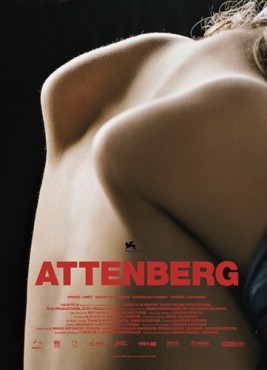 Attenberg, dir. Athina Rachel Tsangari,
Attenberg, dir. Athina Rachel Tsangari,
Greece 2010According to one opinion that has recently been gaining traction, Greeks consider the image of the family to be the perfect model through which to talk about social conditions. In Homeland, Syllas Tzoumerkasi employs this analogy directly, mixing intimate scenes with visions of marches, protests, and rioting. Much is expressed through editing; the extreme close-ups of the characters resemble the shots used in “Dogma” films, but the fast-paced switching between interlocutors disrupts this intimacy, often transforming ordinary situations into scenes straight out of a thriller. These simple measures fully convey the anxiety and tension found in social and family life. In Attenberg, references to contemporary civilisation are much more metaphorical. In a depopulated modern housing estate, a young women wanders between three people: her dying father, a friend with slightly nymphomaniacal inclinations, and a complete stranger who is attracted to her. Marina not only doesn’t want to grow up and take a confident step into the social world, she isn’t even interested in being human. Her downright autistic isolation causes us to perceive her as just another species of animal. When she asks her girlfriend “How do they do it” during a rather awkward lesson in kissing, she is inquiring about all of human activity.
The Prize, by Mexican director Paula Markovitch, won the hearts of festival audiences. Set in 1970s fascist Argentina, the plot is more than a mere autobiography. The cool yet beautiful pictures and sparse dialogue convey a great story — one viewed from a child’s perspective — and a sad tale about the deteriorating ties of a family whose members fail to pull together in the face of an exhausting threat. Of all the films in the competition, Markovitch’s featured the most traditional narrative and friendly characters. Sadly, this isn’t the first time that mirror neurons have influenced a verdict.
The verdict:
In the New Horizons International Competition, an international jury comprising Anocha Suwichakornpong, Denis Côté, Hugo Vieira da Silva, Frédéric Boyer, and Mariusz Grzegorzek chose from 14 films.
The Festival Grand Prix award and 20,000 euro were given to Attenberg, dir. Athina Rachel Tsangari, Greece 2010 A special distinction was awarded to the film Gravedigger (A sírásó), dir. Sándor Kardos, Hungary 2010 The International Film Guide award was given to Brownian Movement, dir. Nanouk Leopold, Netherlands / Germany / Belgium 2010.
For the second time in the festival’s history, the International Federation of Film Critics awarded the prestigious FIPRESCI prize to Gravedigger by Sándor Kardos. The FIPRESCI jury comprised Carmen Grand, Kira Taszman, and Anita Piotrkowska.
What’s new on the horizon
The most formally innovative pictures featured in the competition, Gravity Was Everywhere Back Then and the FIPRESCI Award-winning Gravedigger, take two different approaches to the issue of death. The latter, based on a story by Rainer Maria Rilke, was shot with the type of camera used to capture horse racing photo finishes.
Surrealist visions, as compulsive as thoughts of suicide, arise out of the rolling frames of distorted pictures, perfectly illustrating the lives of the characters, paralysed by the ubiquity of death and hopelessness, people who cannot and will not leave their village, nor have any motivation to do so. Shot by Hungarian director Sándor Kardos, the film is also an interesting examination of the essence of cinema. It is not the events and their depiction that matter, it is all the tiny changes in the field of vision; not the movement itself, but the desire to capture it. The viewer is akin to the sick rabbit, kept by one of the characters, compelled by its instincts and habits to expect help until the very end, even in the face of slow agony. Brent Green takes a wholly different approach in Gravity Was Everywhere Back Then, animating still images as if they were cels in a cartoon. While real actors are cast in the main roles, their behaviour strikes us as contrived. This simple technique allows the American director to completely blur the boundaries between reality and fantasy, creating a new tale based solely on the logic of emotions. The story of the love between Leonard and Mary, while enormously funny at times, is actually a serious reflection on the death of a loved one and the sense of helplessness it causes, driving even a staunch atheist to irrational hopes and actions, and causing him to forget that “gravity” is inevitable.
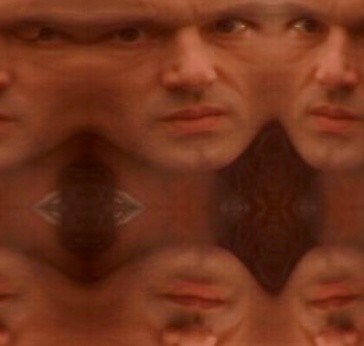 Gravedigger (A sírásó), dir. Sándor Kardos,
Gravedigger (A sírásó), dir. Sándor Kardos,
Hungary 2010
Back and forth
More or less successful mental voyages made up the bulk of the competition. The voyeuristic vibe was often reaffirmed through ostentatiously thrill-seeking camera work. If there were a competition for film sketches (or rather sketches of films), Utopians and Summer of Goliath would certainly be in the lead. In both beautifully produced films, the camera conceals conceptual wishy-washiness, shifting in and out of focus, carefully picking the main characters out of the background. Searching for and following a character is one thing, but a desperate, pseudoartistic avoidance of any resolution in the plot is quite another. In this category, Summer of Goliath is the strongest of the two. This faux-documentary is a collage of scenes portraying the poor inhabitants of a Mexican village. Killing is regarded as a way of life, while literacy is considered a luxury. The director cuts from interviews with locals to staged scenes starring the same characters, suggesting that the difference between fact and fiction isn’t very relevant in this situation, as even the most absurd events could very well take place. The Mexican village represents every other place on earth where the lack of prospects is just as inevitable as death.
Sivaroj Kongsakula takes us on a literal voyage in Eternity. The narrator is a spirit that haunts its childhood home, reminiscing about the care-free love that was supposed to last forever. The longer we listen to the silence and the unhurried melody of the tiny, affectionate gestures of the two lovers, the more we become convinced that films described by their distributors as “contemplative” and “meditative” are to be avoided in the future at all costs. The strongest aspect of Eternity is its unpretentious portrayal of spiritual states that remain “foreign to Westerners”, but that hardly makes for a good recommendation.
The director of AUN – The Beginning and End of All Things takes us on a trip through similar landscapes, albeit with a different dynamic. His film exemplifies true cinematic poetry at the edge of comprehensibility, or perhaps far beyond it. It makes thousands of attempts to convey the idea that culture is merely an extension of nature, and man is the most proud and arrogant creature on earth. All of these techniques are variations on a common theme, however, and the picture could just as well have been edited down to 5 minutes or extended for 5 more hours without changing for better or worse. The work of the Japan-based Austrian director, Edgar Honetschläger, ring terribly false; there is nothing honest in his compulsive questions about man’s place in the world. These questions are of the delightfully unanswerable variety, an intentional detail that changes everything.
The most upbeat of the competition’s cinematic voyeurs, François-Jacques Ossang took viewers on a trip along well known landmarks in film and literature. The point of departure — in which the character attempts to write a screenplay, struggling all the while with the pop-cultural clichés bombarding his mind — seemed promising. Yet by forcing his character/screenwriter to think outside the box, the director himself falls prey to the convention of endless pastiche, which is little more than art for art’s sake.
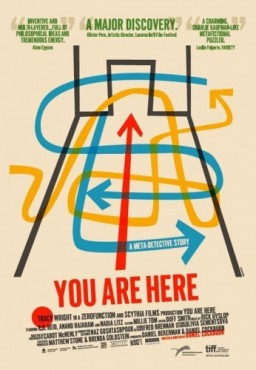 You Are Here, dir. Daniel Cockburn,
You Are Here, dir. Daniel Cockburn,
Canada 2010The film I was rooting for the most — next to Brownian Movement — was Daniel Cockburn’s You Are Here, a piece related, yet somehow antithetical, to the previous movies. This eclectic picture is an amusing crash-course in analytical philosophy. Sadly, judging by the reaction of the audience, this branch of philosophy remains more exotic in its European homeland than Shintoism, Zen, and Buddhism combined. The creators deserve praise for the inspiration itself: after all, analytical philosophy rarely makes an appearance in the broad field of humanist discourse, probably because it cannot simply be skimmed or read at an efficient pace due to its use of minimalist language, while its improper application is easily verified. Cockburn flows freely from one abstract idea to the next. He doesn’t settle for simple imagery, transforming it instead in his own style. He extracts the humour in John Searle’s concept of the Chinese room, David Lewis’s possible worlds, or Wittgenstein’s “ladder”, while Hilary Putnam’s “brain in a vat” — an argument against skepticism — serves as a pretext for a discussion on the absurdity and social consequences of assuming other people’s points of view. And while this entire exercise too closely follows Ernest Nagel’s views on the impossibility of ultimately comprehending the mind, the “metacriminal story” (as the director describes it) about the way people think and perceive the world remains fascinating and enthralling. In contrast to AUN, You Are Here demonstrates that one does not make better use of his imagination by creating personal visions from scratch, but by finding cracks in that which is widely available and offering a completely new perspective on familiar issues.
Feminine perversions
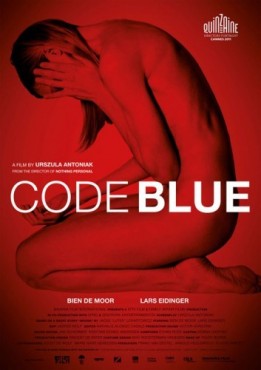 Code Blue, dir. Urszula Antoniak,
Code Blue, dir. Urszula Antoniak,
Holandia 2011Two films that open with the theme of women seeking fulfillment were a strong point of the international competition. In Urszula Antoniak’s Code Blue, the only intimacy in the life of an aging nurse is found at the bedsides of her dying patients. To them, she becomes more than a just a nurse: she is a saint, their Charon who ferries them across the river Styx. The nurse longs to carry that feeling over into the fully-controlled, solitary life she leads in her freakishly sterile apartment. Wonderful, grainy images, with their cold tones and shots of crushingly empty spaces, are the primary narrative technique. The director makes great efforts to make a cathartic experience out of the film, and does so successfully: interpreting it through psychological codes seems futile. In the story of this demon-woman, this personification of death, the truth about man is revealed through stark contrast, through eternal conflict and contamination: life and death, spirit and flesh, pain and bliss.
Brownian Movement, winner of the International Film Guide award, is an even better picture. It is an odd story of a doctor who drifts away from her successful relationship by engaging in chaotic, escapist behaviour. She has sex with her patients, who range from cripples, to the elderly, to the downright hideous. The woman eventually gives up her rendezvouses, but as her husband soon discovers, she doesn’t stop dreaming about them. The film is not an analysis of perversion, however, but rather an analysis of a relationship. The women’s action can hardly be regarded as betrayal. Rather, they are a struggle to breathe in a — by all appearances — happy relationship, to salvage what shreds of autonomy she has let, even at the price of shame and guilt.
Civerophobia
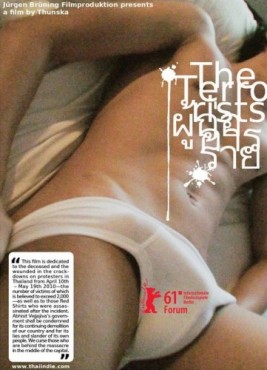 The Terrorists, dir. T. Pansittivorakul,
The Terrorists, dir. T. Pansittivorakul,
Thailand 2011The controversial film The Terrorists is in a class of its own. Announced as an homage to the victims of the spring 2010 crackdown on protesters in Bangkok, every frame of the film hints that the filmmakers have abandoned the formula of the documentary that shows shocking and overwhelming events, considering it to have run its course long ago. The director opts instead, without compromise, for a poetic that earned him a critical lynching. I can’t think of any other screening that had been abandoned by such a large portion of the audience. The document didn’t deal with the riots and their social causes, as much as with the way such events function in the collection (un)consciousness of society. Employing a series of simple yet incredibly effective acts of manipulation, Thuna spends half the movie depicting his characters in such a way that the viewer is moved more by the sight of fish choking on land rather than the plight of the fishermen themselves. The latter half of the picture is filled with autoerotic scenes accompanied by a detailed description of how the victims were tortured. This demonstrates that the image always affects us more strongly than textual communication, and can even dominate it completely. It’s interesting how such commonplace sexual activities, conducted in private, were regarded as obscene by so many. It’s interesting that the contemporary viewer is not offended by BDSM-themed pornography only because it has become so conventionalised, while ordinary and unpretentious acts turn out to be unacceptable. The Thai director doesn’t rend his garments over the events; there is a certain air of surrender, the kind that comes with the belief that it’s just human nature. There are no easy accusations leveled at the world for its indifference, nor is there any acceptance. I think there’s more respect for the victims and the audience than common, knee-jerk morality would have us think; a morality that smoothly transforms the question “what do I think of this?” into “what am I supposed to think of this?”. Say what you will about The Terrorists, but the popular opinion stating that the director used a documentary about tragic events to indulge his homoerotic fantasies is, to put it gently, rather unintelligent. Movies like this don’t win competitions, but perhaps that’s for the better. There should always be a place in cinema for edgy pictures that continue to irritate and disgust us.
11th International New Horizons Film Festival, Wrocław, 21–31 July, 2011, International Competition
translated by Arthur Barys






